Hi, I’m
Amy Pottenger!

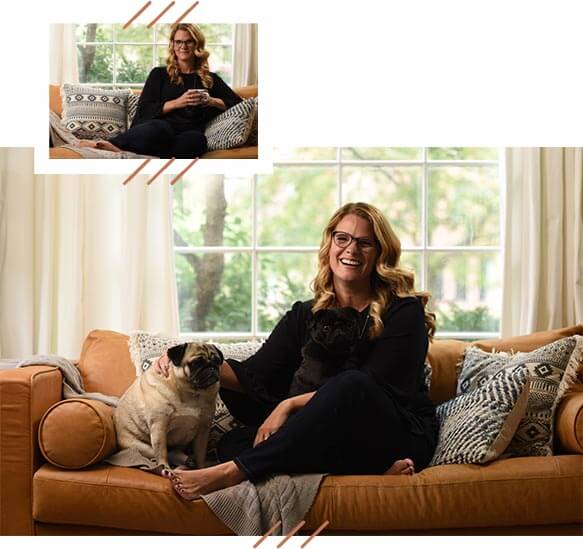
I know first hand what it’s like to be running a business while raising kids and cultivating a thriving marriage. It’s a lot.
It’s my mission to use my 15+ years of experience to create a lifeline for entrepreneurial mamas, helping them realize the homes of their dreams.
Join me
Read more
Stay Home Design Tips: Area Rugs 101
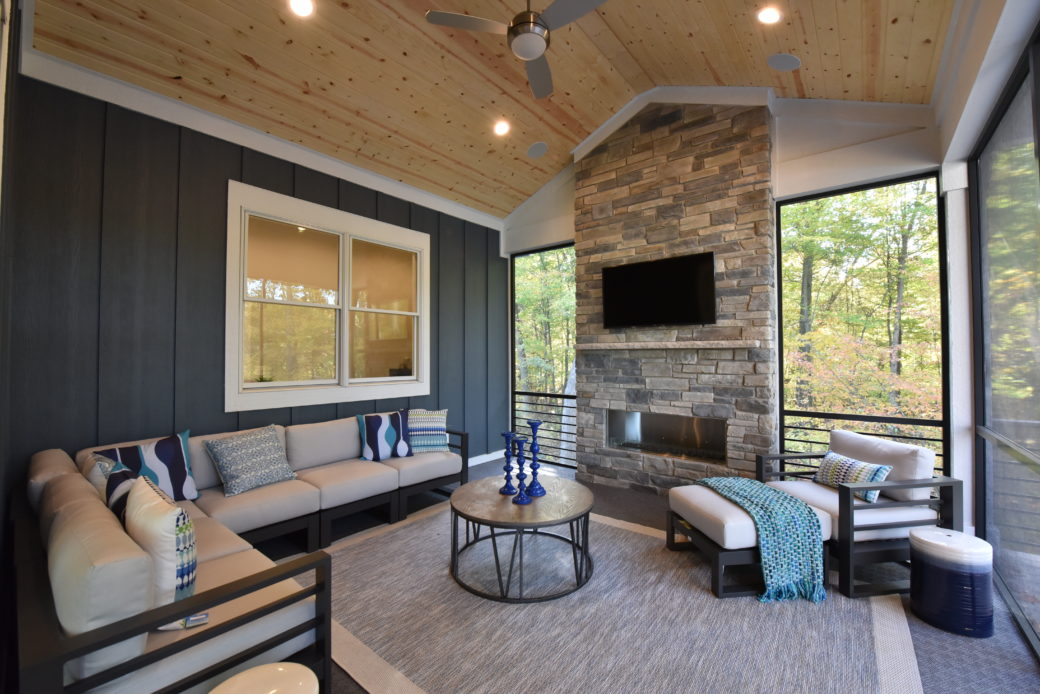
Photo from our Thornapple River Project
Hey Friends! On the corresponding Stay Home Design tips video I share some of my favorite tips when selecting an area rug, you can check out that video over on IGTV!
So you’re sitting in your living room and you keep looking around saying “this room needs something”… Well, if you don’t know what that something is, odds are it might be an area rug! Why would I say that?
- If a space doesn’t feel finished, often there is no rug to anchor the furniture. Area rugs tend to be that piece to the room that ties everything together.
- Same goes if a room feels “off”. You might have the wrong size rug, or disjointed color or pattern in your existing rug, disjointed meaning that it doesn’t work well with anything else in the room.
- Area rugs help to define a space, especially in open plan main areas where a living room/ dining room and kitchen are combined
- Area rugs can help with color in-decision. Don’t know what accent colors to add? Find an area rug you love and use that as your starting point for all of the accessories, lamps and art in the room and make your job easy!
- Area rugs make your room feel more warm, cozy and inviting. All keys to a home that empowers a refreshed life!
Area Rug Tips for Living Rooms
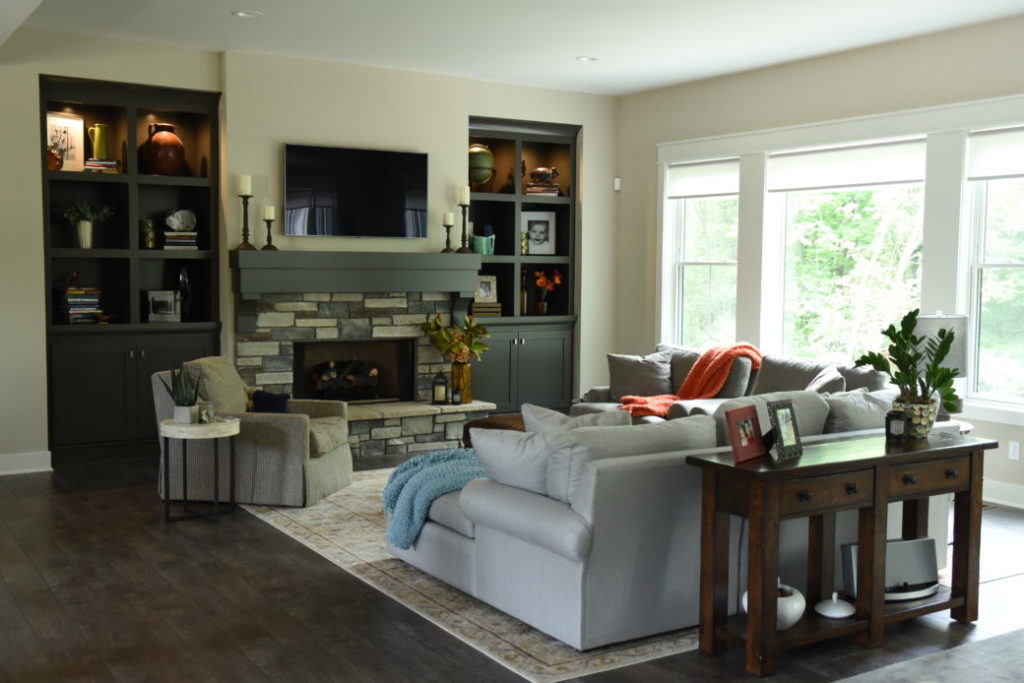
- Anchor your area rug with your furniture. You’ll want the furniture to either be all the way on the rug, or to have the front legs of the furniture on the rug and the back legs off the rug.
- Approximately 6″-8″ of rug on either side of the furniture is a good rule of thumb. I don’t view that as a hard-and-fast rule, because depending on the space you can play with that dimension a bit, but if you are unsure and just starting out, use 6′-8″ as your guide.
- Typical rug sizes for living rooms are 8′ x 10′, 9′ x 12′, 10′ x 14′. When in doubt, go a little larger- the most common mistake I see when using area rugs is getting a rug that’s too small.
- Repeat the colors used in your area rug with your accessories, art and lamps for a cohesive, well designed look. If you keep your furniture neutral, then down the road all you’ll have to switch later when you want a new look is the rug and pillows!
Area Rug Tips for Dining Rooms
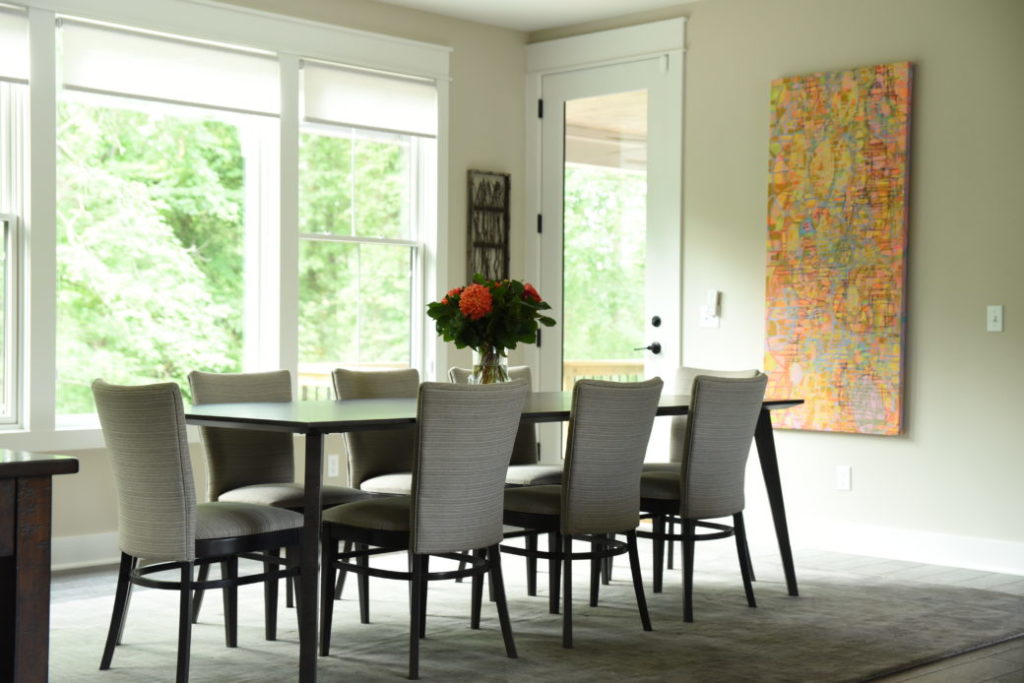
- You don’t always have to use an area rug in your dining room! Sometimes the architecture just doesn’t lend itself to a rug, and that’s ok- or maybe you have young kids who are in the “throw-the-food-in-all-the-places” stage and you want to wait to get a rug until they’re a little older. No problem. Put a rug in your living room, maybe a runner or two in your kitchen and call it good.
- If you use a rug, make sure you can pull out the dining chair completely (like you’re pulling it out to sit in it) and still have the chair be all the way on the rug. It will drive you crazy if the legs of your dining chairs catch on the rug every time you sit down! A good rule to fix this: measure 24″ from the edge of your table and that’s where the edge of your rug should be.
- If you want your space to look larger, make sure there’s at least a 12″ gap of floor space between your rug and the wall.
- Typical dining room rug sizes: 8′ x 10′, 9′ x 12′, 10′ x 14′
- Practicality check: Consider using a washable or modular rug (such as FLOR) when selecting your dining room rug if you’re extra worried about spills. Another trick is to choose a pattern with more movement and color that will make stains less obvious should they happen
Last but not least…
Don’t forget the rug pad! Why?
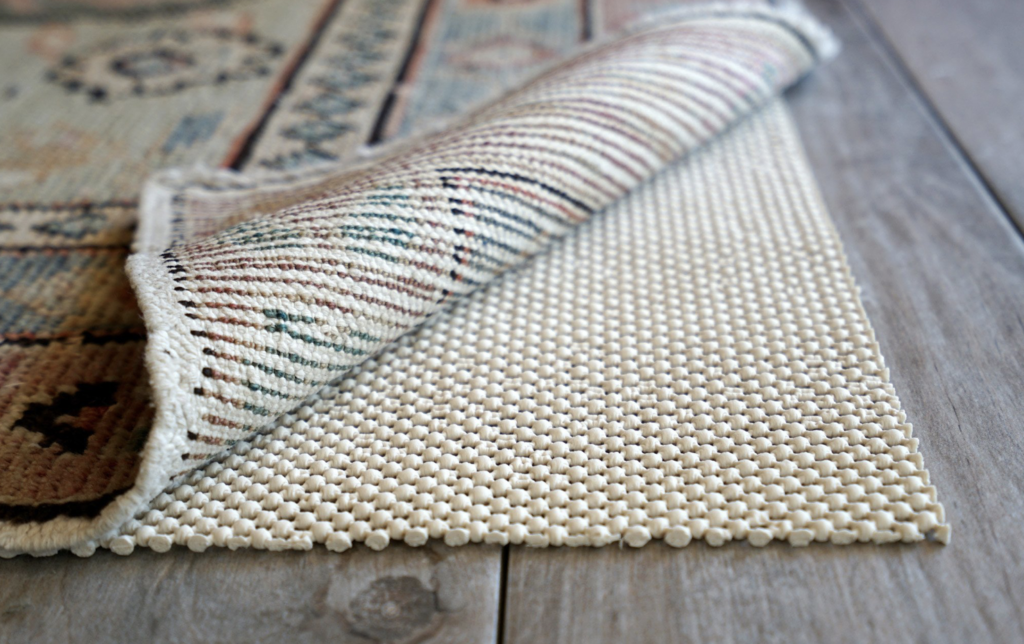
- Safety. Rug pads keep the rug in place and stop it from slipping.
- It protects your floor and extends the life of your rug. But be sure to get the correct kind of rug pad for your floor- if you’re putting a rug over carpet, get a pad designed for that. If the rug is going over hardwood, get a carpet pad for hardwood floors.
- Your rug will feel more comfy! Rug pads add another layer of softness and cushion under foot.
Happy rug shopping, I hope these tips are helpful for you as you search for the right one to complete your space!
Stay safe, stay healthy, keep staying home!
XO, Amy
